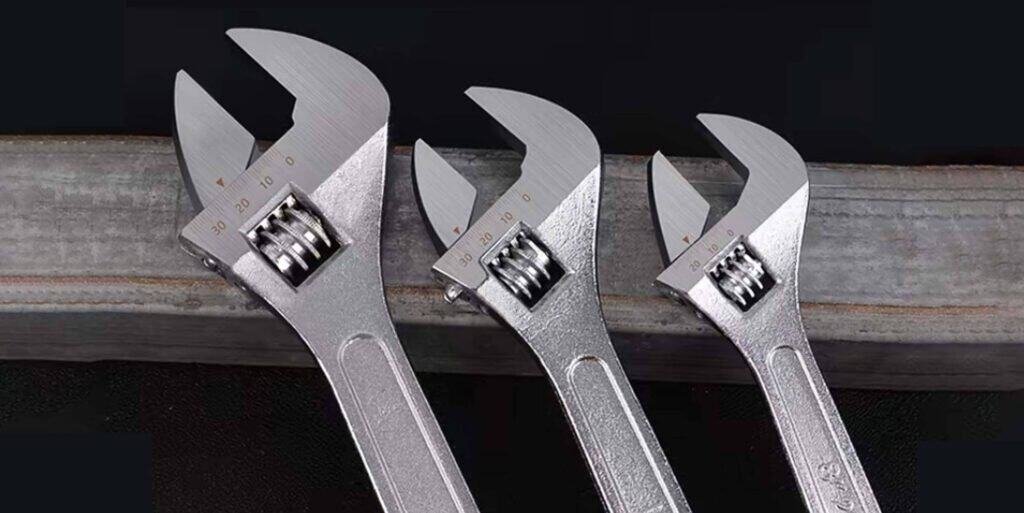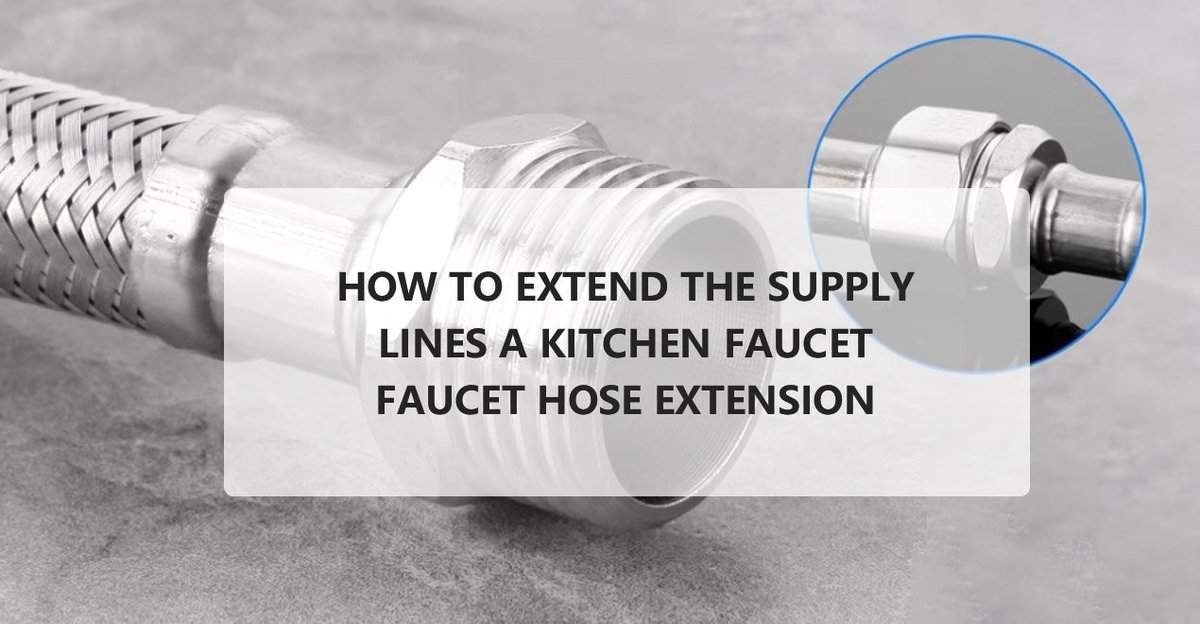FAUCET HOSE EXTENSION
Are you looking to extend the supply lines of your kitchen faucet? Whether you’re upgrading your kitchen or fixing a plumbing issue, extending the supply lines can be a straightforward task with the right guidance. In this article, we will walk you through the steps to extend your kitchen faucet’s supply lines, ensuring a seamless and efficient installation. Let’s dive in!
Kitchen faucets are an essential part of any kitchen, and their proper functioning is crucial for carrying out day-to-day activities in the kitchen. One of the challenges that people face when installing kitchen faucets is the length of the supply lines.
Normally, when buying a new faucet, the faucet water supply line that comes with it is quite short, which can be rather disappointing, don’t you think so? But do not fret because we’ve got your back.
The supply lines may not be long enough to reach the sink’s water supply, which can make the installation process difficult. However, this problem can be easily solved by extending the supply lines of the kitchen faucet. So, you need to purchase faucet hose extensions to make it longer.
In this article, we will discuss how to extend the supply lines of a kitchen faucet using a faucet hose extension. This is an easy DIY job for anyone and can save you from a lot of money by being your own plumber.

Understanding Faucet Hose Extensions
Faucet hose extensions are a popular solution to extend the supply lines of kitchen faucet sinks. They are made of durable materials, such as stainless steel, and are designed to fit standard kitchen faucets. These extensions are available in different lengths, ranging from 12 inches to 72 inches, which make them suitable for most kitchens.
The first step in extending your kitchen faucet water supply line is to measure the distance between the faucet and the water supply. This will determine the length of the hose extension needed. It is important to measure the distance accurately to ensure that the hose extension fits perfectly.
Tools Required
Before beginning the installation process, it is important to have all the necessary tools. These include:
- 1. Adjustable wrench
- 2. Teflon thread sealant tape
- 3. Faucet hose extension
- 4. Compression adapter
- 5. Empty bucket

Installation Process
Once you have all the necessary tools, you can begin the installation process.
Step 1: Turn off the Water Supply
Before beginning any plumbing work, it is important to turn off the faucet’s water supply line.
This can be done by turning off the shutoff valve located under the sink. Normally, there are two shutoff valves under the sink which controls the hot and cold water. If there are no shutoff valves, the main water supply to the house will need to be turned off.

Step 2: Disconnect the Supply Line
Using an adjustable wrench, disconnect the supply line from the faucet. Be sure to place a bucket or container under the sink to catch any water that may leak out.

Step 3: Install the Faucet to the Sink
Insert the tailpiece and connector to the drilled holes on the countertop. Slide the rubber washer retainer ring and hold the faucet in place.
When tightening the faucet to the sink, don’t make the mistake of overtightening the nut or it can damage the countertop. Just a quarter turn using the wrench will do.
Step 4: Check your faucet supply lines.
Most faucet supply hoses vary in size by a few inches, others measure 1/2” while others are a quarter of an inch, with a 3/8” compression fitting to connect to the building water lines.
With reference to an integrated faucet supply line that ends with 3/8” compression nuts, you will need to use a 3/8” compression x 3/8” OD x 12” to make a longer supply line to connect to the shutoff valves. If you’re curious about what ‘OD’ means, it is outside diameter.
There are times when we’re trying to install a new faucet in our sink and the existing lockout or shutoff valve, which is 1/2″ in size, does not match its supply line, which is 3/8″ in size.
The new faucets on the market today usually come with supply lines that are 3/8″ in size. In this case, you need to buy a 1/2″ female OD to 3/8″ OD compression adapter to join them together.

Step 5: Connect the Supply Lines Together
This is the best option to extending the supply lines to reach the main source. Make sure that you buy the compression adapter, as the threads are cut differently from other types of adapters. Although it comes with an extra nut fitting, which sometimes confuses people, you will not need it.
So, remove the nut, and then all you need to do is hold up the compression adapter’s bit measuring 3/8″ and add some layers of Teflon tape on it to tighten the fit. Then, screw it into the 3/8″ supply line.
To install the compression adapter’s mouth measuring 1/2″ to the shutoff valve of the same size, you need to add Teflon tape again before screwing it in so the water does not leak out.
On one end of the faucet supply line, remove the nut and compression sleeve. Then, you can connect it with the faucet’s supply line extension.
If it has a rubber gasket, you won’t need to use a pipe thread or plumber’s tape. You just snug fit the male threaded end to the compression nut. On the other end, connect it to the kitchen faucet’s water supply valve.
There are ways to extend the connections, depending on the type of water supply line. For flexible water supply lines, attach one end of the faucet hose extension to the supply line by wrapping the threaded end with several layers of Teflon tape. Then screw the threaded end in place using your hands and then, wrench tighten afterwards.
For inflexible water supply lines made of copper and hard plastic tubes, connect them with compression fittings. Bend the pipes as required to line them up. Insert the push-fit fittings for plastic lines and connections using the compression fittings.
Make sure to deburr the coarse edges of the supply line’s copper tube before sliding the compression fitting and fastening it.

Step 6: Turn on the Water Supply
Once the installation is complete, turn on the water supply and check for any leaks. If there are no leaks, the installation is complete.
Extending the supply lines of a kitchen faucet is a simple process that can be completed in a few easy steps. Faucet hose extensions are an affordable and durable solution that can be easily installed using basic plumbing tools. By following the steps outlined in this post, you can extend the supply lines of your kitchen faucet and enjoy the convenience of a fully functional kitchen.

For more helpful tips and tricks, follow us at https://faucetu.com/ for your faucet support needs.
FAQs
- Upgrading to a new faucet: Newer models may require longer supply lines.
- Reconfiguring your kitchen layout: Moving your sink or faucet may necessitate longer connections.
- Replacing damaged lines: Worn-out or leaking supply lines need replacement to prevent water damage.
- Adjustable wrench
- Basin wrench
- Pipe cutter
- Teflon tape
- Extension hoses or supply lines
- Plumber's putty
Bucket or towel (to catch any water spills)
1. Turn Off the Water Supply
2. Disconnect the Existing Supply Lines
3. Measure and Cut the New Supply Lines
4. Attach the Extension Hoses
5. Connect to the Faucet
6. Test for Leaks




